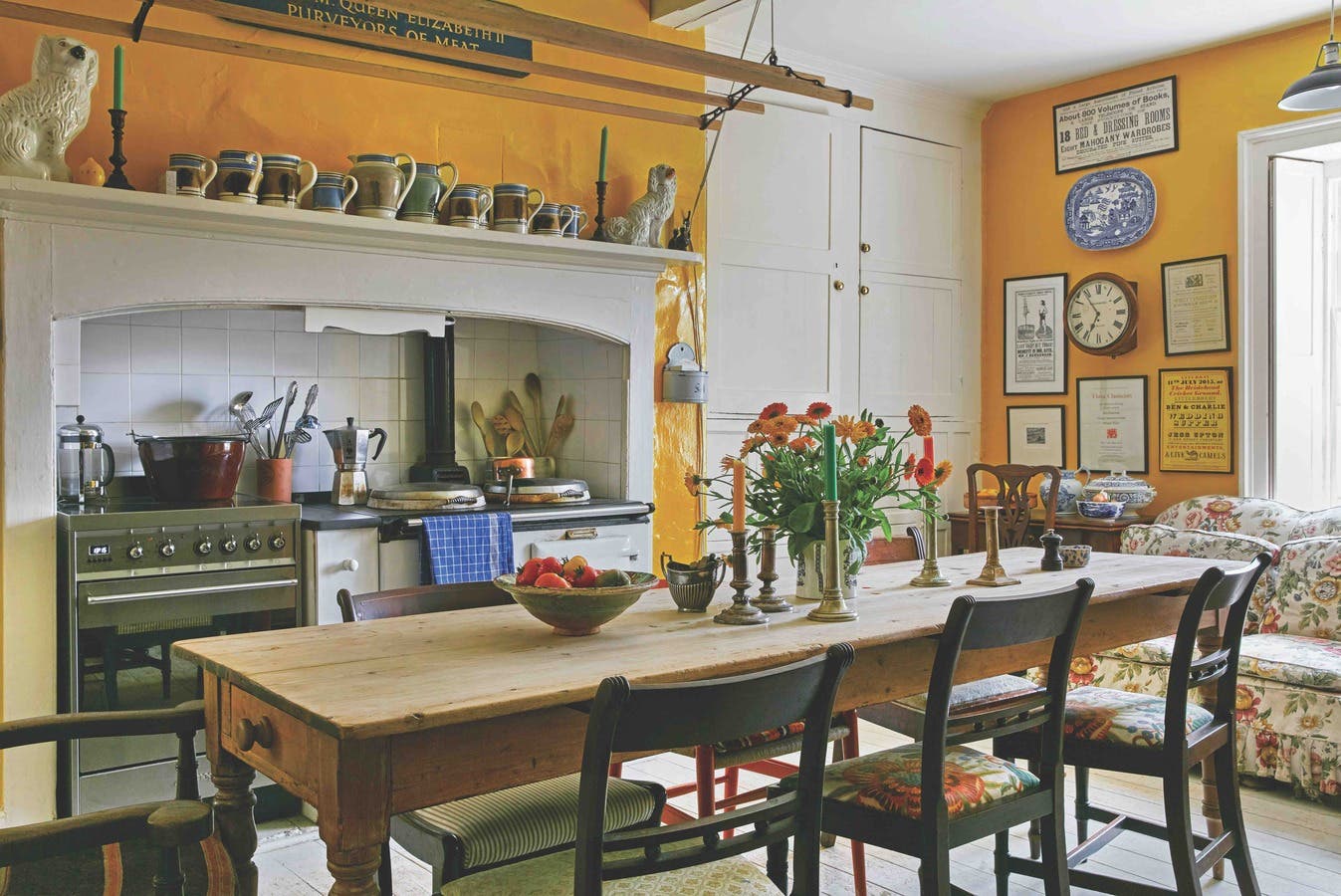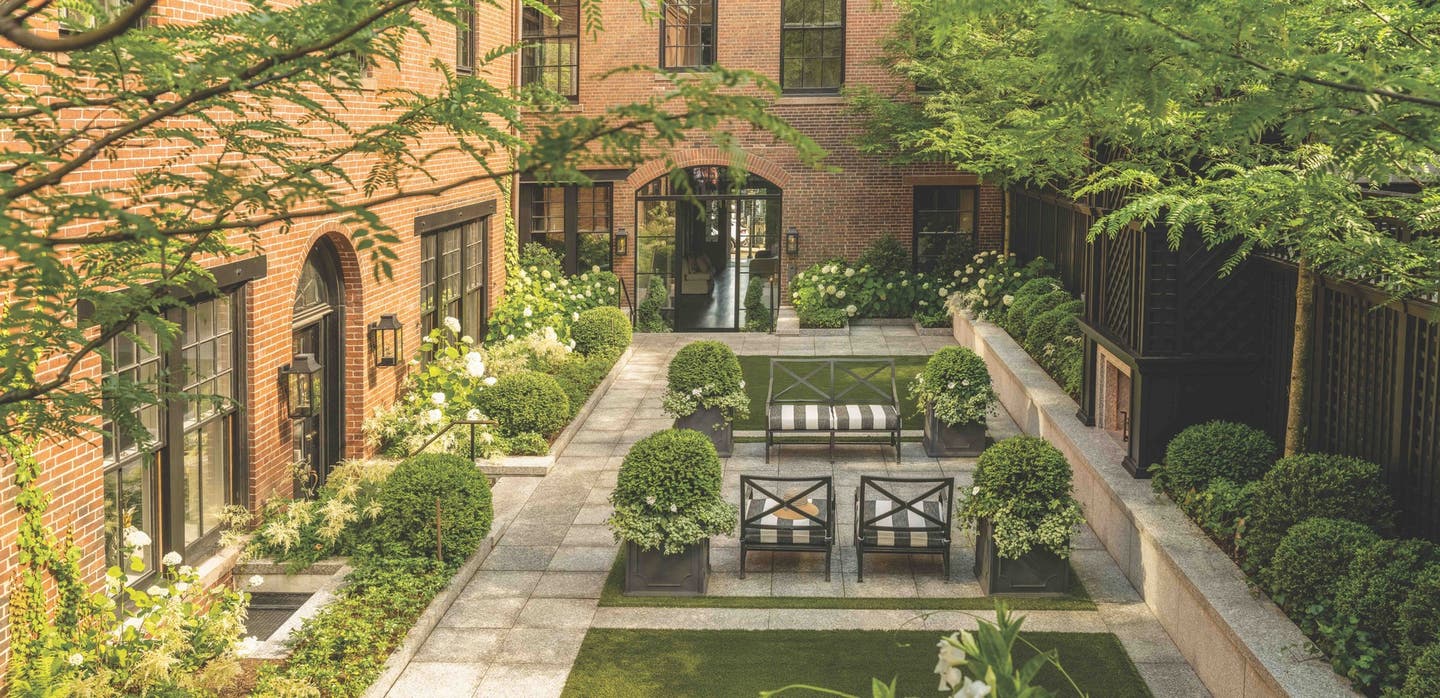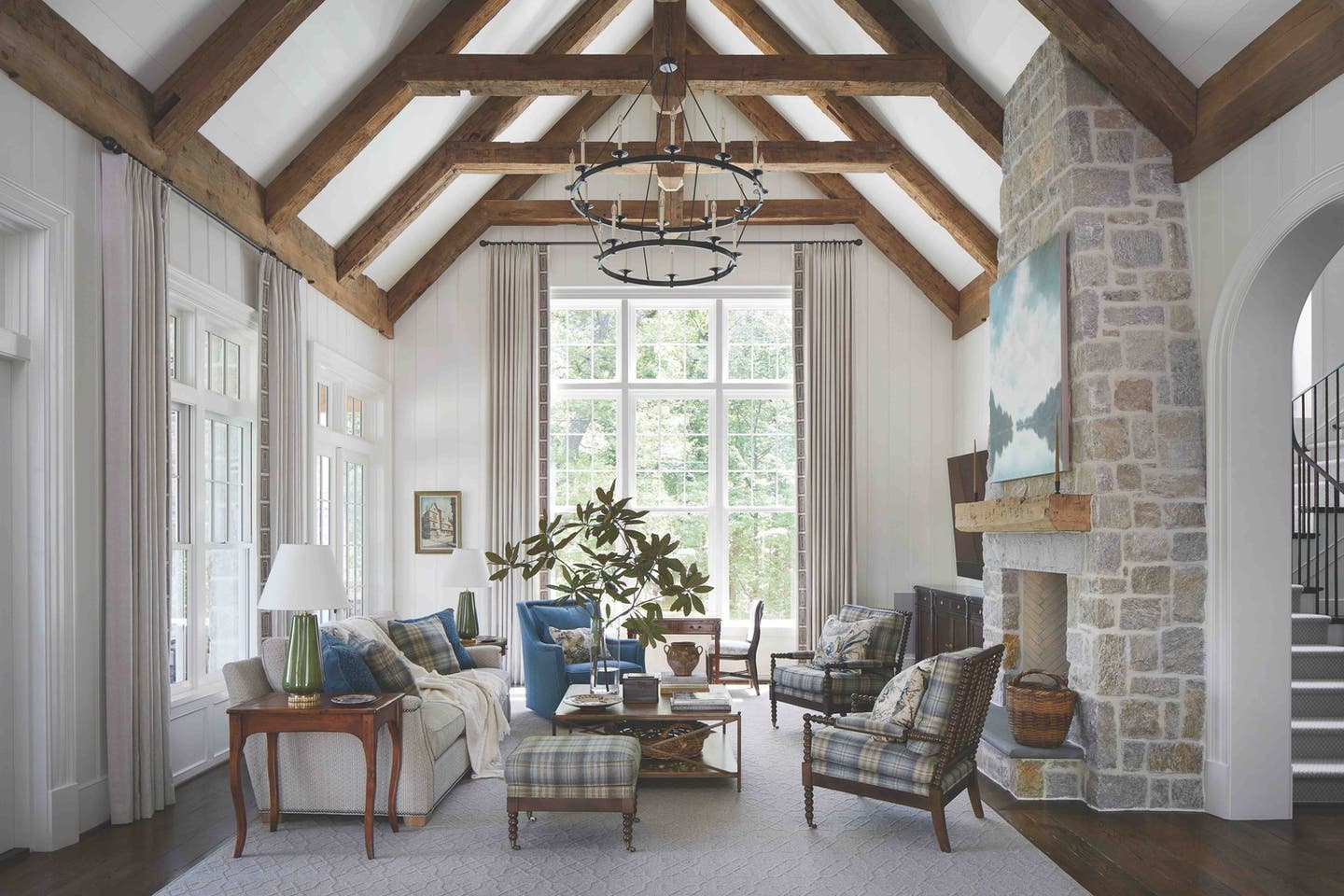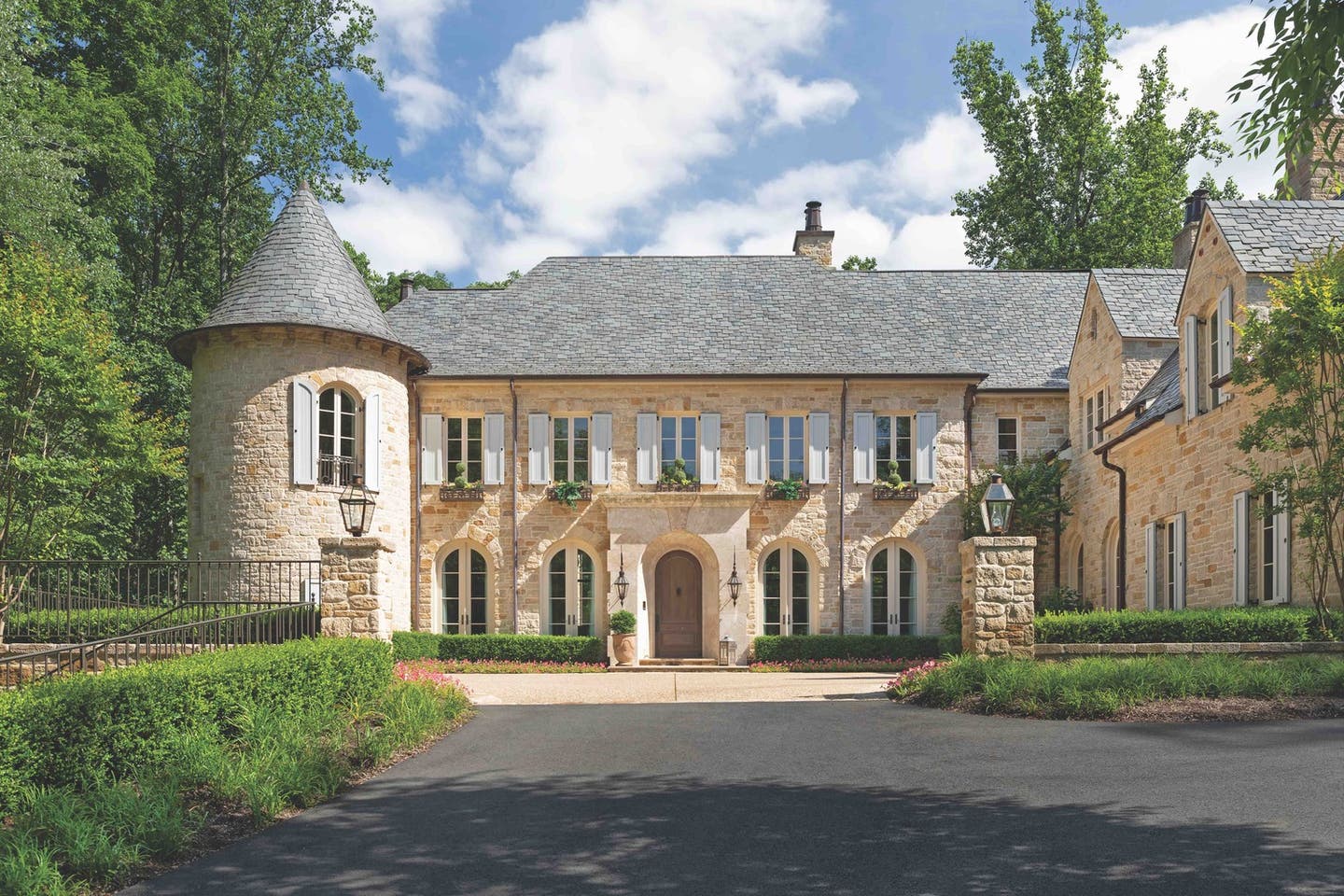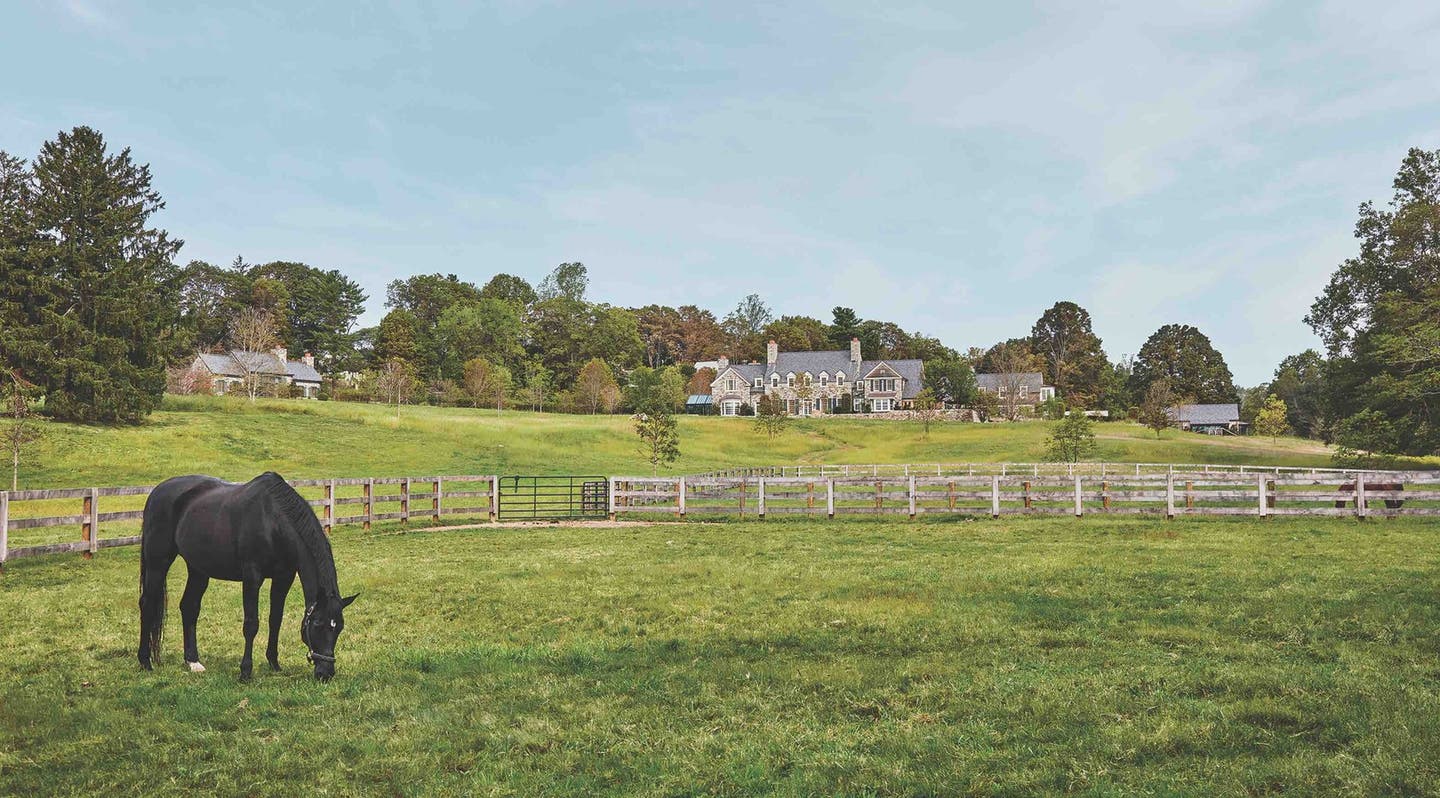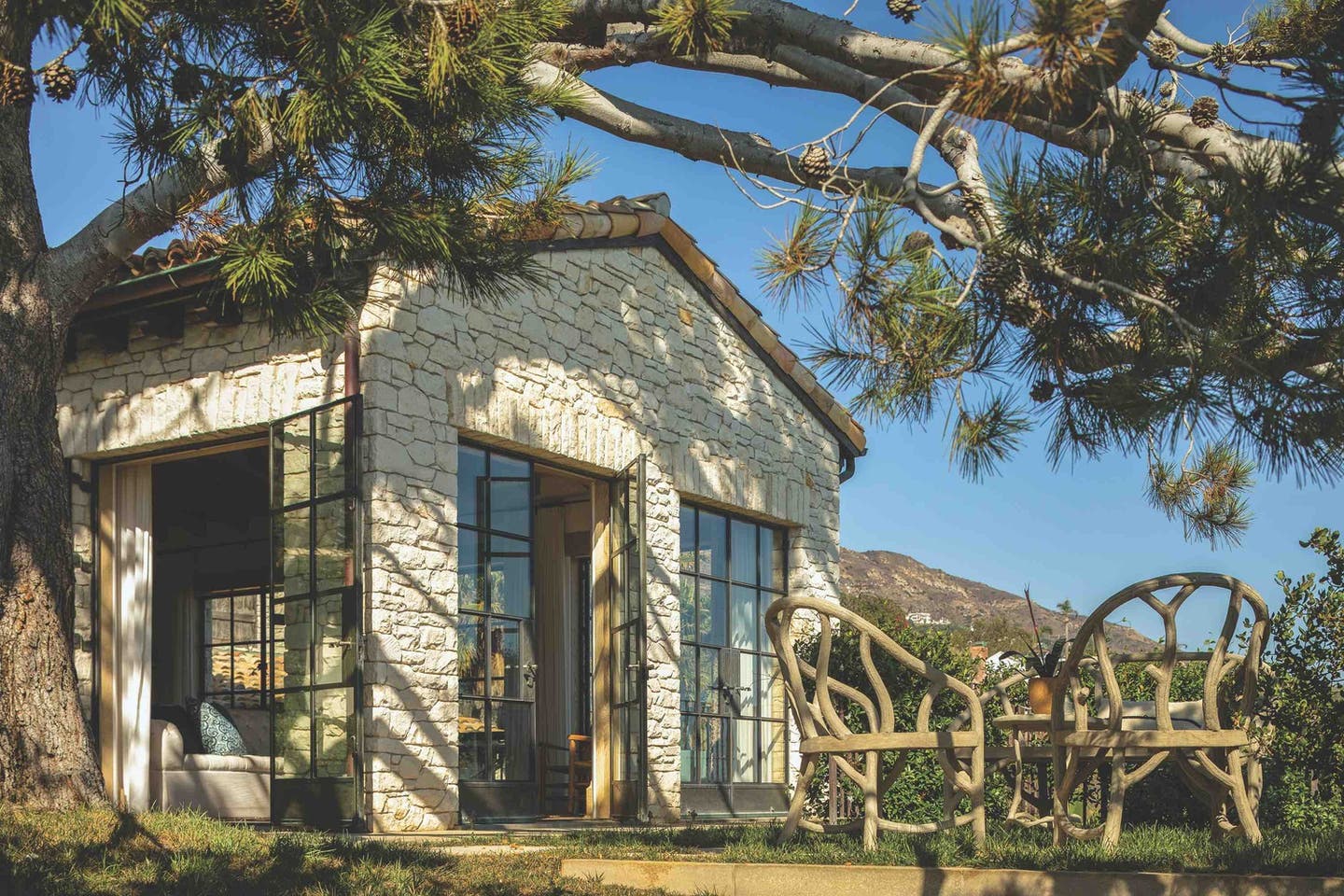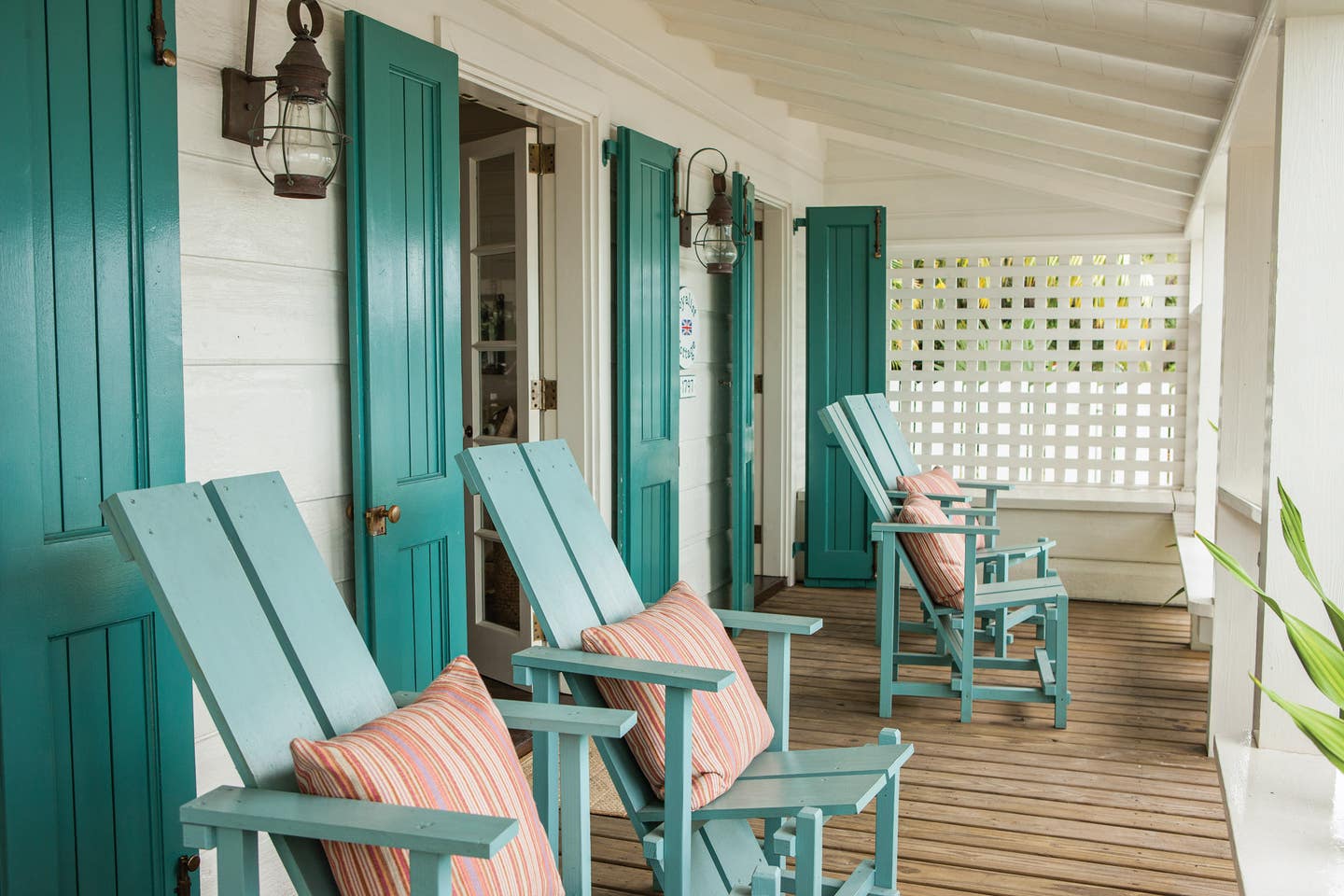
Restoration & Renovation
Loyalist Cottage on Harbour Island
Project Loyalist Cottage
Design Architect FGS Design
Lois and Kenneth Lippmann’s love affair with Harbour Island began with a stay at The Landing, a historic 13-room guesthouse in Dunmore Town. India Hicks—designer, entrepreneur, and overall high-profile Brit and longtime island resident—curated the hotel’s interiors, and an announcement email caught Lois’s attention. The vacation was their first taste of the destination’s quaint cottages, blush beaches, and low-key pace, but not their last. The Lippmanns became annual guests, fishing, reading, walking, and soaking in the tropical charms.
“We often walked past this cottage right in town called the ‘Loyalist.’ It was cute and had such great history—it’s one of the oldest wooden structures on The Bahamas. But it was falling into the ground,” recalls Lois. After chatting with a gallery owner acquaintance, who urged them to buy and make their connection with Harbour Island permanent, the couple began to seriously consider taking the leap. And their thoughts rested on just one home: The Loyalist, with its 18th-century pedigree set just a stone’s throw from the harbor.
About 1,500 square feet in size, the two-story gabled house was built in 1797, making it the oldest of the country’s “Loyalist Cottages.” Situated on land sold by governor John Murray, Fourth Earl of Dunmore, the structures were for refugee Brits resettling amidst the turmoil of the Revolutionary War. Built in the colonial style with tropical influences, they are humble in stature, with stick frames and small plots, and together formed a community near the town center.
Through the island grapevine, the Lippmanns, who hail from Westchester County, New York, learned that the Loyalist’s owners were willing to sell. “We had lunch at the Sip Sip, talked it over, and decided to go for it,” recalls Lois. “We had restored houses before and always managed to come out on the good end.” Luckily, the same connections that brought them their island retreat also led them to architect Francisco Sanchez, founder and principal of FGS Design in New York City.
Sanchez had already successfully completed a couple Harbour Island projects, including the renovation of the well-known Jewelbox house right in town. Navigating the ins and outs of high-end construction on The Bahamas is a challenge. Almost all building materials are brought from the mainland via small container, which first goes through customs before arriving on Harbour Island’s Bay Street docks. Sanchez’s dedication to Bahamian heritage coupled with his design savvy and ingenuity made him the perfect choice for resurrecting the Loyalist to its former glory.
It was paramount to the owners—and the town—that the structure be preserved, but the foundation was crumbling and a new one needed to be poured and the house raised. “We removed the roof and everything inside besides the walls to lighten the load,” recalls Sanchez. “But the wood was rotten and brittle, and as soon as the contractor started, the walls buckled. It was devastating, and the town was up in arms.”
“It was not a good day when we got that call,” concurs Lois.
The renovation quickly turned into a re-creation. The cottage’s nearly 220-year-old rotting timber frame was replaced with conventional wood framing. “It was important to reproduce the form and detailing, and we salvaged as many of the old Abaco pine boards as we could, using them as cladding on the façade,” explains Sanchez, who opted for more historically accurate double-hung windows instead of the 1960s louvered versions.
While the home’s presentation to Bay Street remains the same—dual dormers, covered porch, wooden shutters, and white picket fence—Sanchez took creative liberties within the original footprint to improve flow and function. He also gave the owners an additional 1,000 square feet of living space via a master bedroom suite addition, which stretches perpendicularly along the rear of the property. “We have two sons who are married and four grandchildren. When they visit, they sleep in the main house and we have our privacy in the addition. It works perfectly,” says Lois of the separation.
The extra wing gained the Lippmanns a variety of modern perks, including a laundry room, sitting room (aka “man cave” for Ken), walk-in closet, bathroom with soaking tub, and Lois’s favorite feature, the outdoor shower. “During the day, you open the door and see the ocean. At night, you look up and see the stars. It’s glorious,” she describes.
Originally, the cottage consisted of a living room, dining room, and bedroom on the first floor and three bedrooms on the second. In typical saltbox style, the kitchen was housed in a lean-to off the back. Sanchez eliminated the first-floor bedroom in favor of an enclosed study, where the owners can watch movies or work remotely. He also reduced the bedroom count on the second floor to two, gaining room for an additional bathroom.
Since the home is on a corner lot, Sanchez had to contend with the busyness of Crown Street to the side: “We flipped the first-floor arrangement, creating a mirror image. Now the stair, powder room, and study lie on the home’s west side, sheltering the public rooms from the noise,” he explains. “It was brilliant,” says Lois of the flip, “and the light from the east in the morning makes the house feel bright and cheery.”
The new kitchen maintains the original’s galley shape and positioning. Quietly styled, it features a tray ceiling, open shelving, shiplap cladding, apron-front sink, and a Wolf stove, an imported indulgence for Lois, who loves to cook. Cuban cement tiles are an upgraded homage to the kitchen’s pre-construction patterned vinyl floor. “It’s a very popular pattern on-island and we were able to customize the colors,” adds Lois, who collaborated with designer Trish Becker, a Bahamian renovation specialist, on the interior’s finishing touches.
Of course, no Bahamas residence is complete without outdoor living spaces, and a sitting porch off the kitchen and dining area reaches beyond the home’s mass to catch harbor views. Its predecessor had simple columns and a concrete base, but Sanchez’s version boasts top-hinged louvers, a built-in bench, and a floor of coral stone pavers. Above, Sanchez augmented the flat roof with a Chippendale guard rail. “The design is from the colonial-style Jacaranda House in Nassau,” he notes.
To save on cost, and to anchor the home’s details with authentic island craftsmanship, Sanchez enlisted Madeflor in the Dominican Republic to execute the millwork. Using FGS Design’s detailed drawings, the Madeflor craftsmen executed everything from the shutters and French doors to the interior’s built-in features. The architectural team visited the shop for a final review before the items shipped for installation.
One of the Lippmanns’ favorite outdoor spaces is the new loggia off the kitchen, which connects the cottage with its rear addition. “It’s where we entertain; we’ve only eaten indoors a couple of times,” says Lois. Nestled within the property’s two volumes, on the more private side of the kitchen/loggia axis, is a courtyard with small pool. “You can’t do laps,” admits Lois, laughing, “but it’s perfect for cooling off.”
Their property’s pièce de résistance is a rebuilt dock across the street. The Lippmanns purposefully installed benches on either side to invite passersby to linger. “We’re very happy that we can contribute a little bit of interest to the main street,” agree the owners.
In fact, it’s Dunmore’s convivial atmosphere that attracted them in the first place.
“There’s a buzz each day, with schoolchildren walking by and golf carts zooming around,” Lois describes. “On Thursdays, the food markets fill up after the big boats arrive from Nassau and Florida. We’ve rented on the Narrows, where it’s very private and quiet,” she continues, “but here in town, it’s more social. We like feeling like part of the community. It’s exactly where we want to be.”
Key Suppliers
ARCHITECTURE FGS Design LLC, New York, NY
BUILDER Owen Higgs and Lionel Rolle
INTERIOR DESIGN CONSULTANT Trish Becker Design, New York, NY & Harbour Island, Bahamas
MILLWORK Madeflor, La Romana, Dominican Republic
MOULDINGS & WINDOWS Blumer & Stanton, West Palm Beach, FL
CUBAN TILE Villa Lagoon



